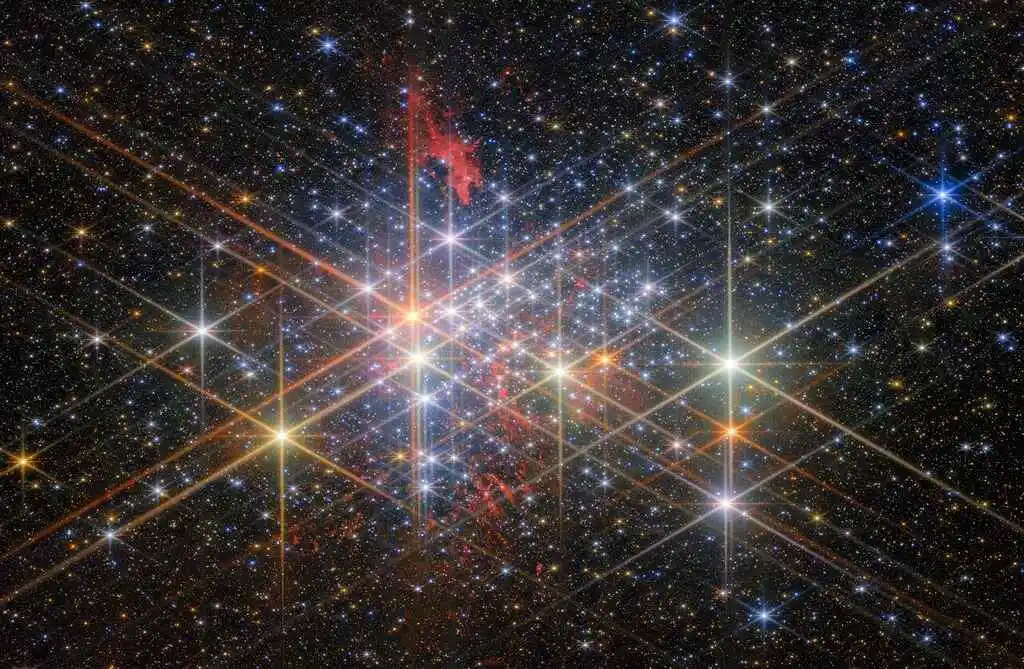| Summary |
|
NASA’s James Webb Space Telescope has captured a striking image of Westerlund-1, one of the most massive and compact star clusters in the Milky Way. Located about 12,000 light-years from Earth, the cluster contains more than 10,000 times the mass of the Sun packed into a relatively small region of space.
Super Star clusters like Westerlund-1 are among the most extreme places in the universe for star and planet formation. While they are common in younger galaxies where stars are still being born rapidly, they are rare in the Milky Way, which is far older and past its most active period of star formation.
NASA says Westerlund-1 has a remarkably diverse mix of massive stars. All of them are in advanced stages of their lives, including Wolf-Rayet stars, OB supergiants, yellow hypergiants, which can shine almost a million times brighter than the Sun, and luminous blue variables. This variety gives astronomers a unique chance to study how such stars evolve and interact in dense environments.
The image was taken as part of the Westerlund 1 and 2 Open Clusters Survey, known as EWOCS, using Webb’s Near-Infrared Camera (NIRCam). The program is focused on studying how stars and planets form and how stars evolve in regions where many of them are born close together.
Westerlund-1 is not only a rare example within our galaxy but also an important laboratory for astronomers. Observing it with Webb allows scientists to see details that were previously impossible with earlier telescopes. Because the cluster is still relatively close in cosmic terms, it provides a much clearer view of how extreme star-forming regions work.
The James Webb Space Telescope itself was launched on December 25, 2021. Unlike the Hubble Space Telescope, which orbits Earth, Webb circles the Sun about 1.5 million kilometers away at a stable point known as L2. From this position, it has been able to send back some of the sharpest and deepest images ever seen of the universe, including galaxies in collision and the earliest stages of star birth.
Astronomers say Westerlund-1 is another reminder of Webb’s power. By observing clusters like this, the telescope is helping scientists better understand how stars live and die and how galaxies like our own came to be.

